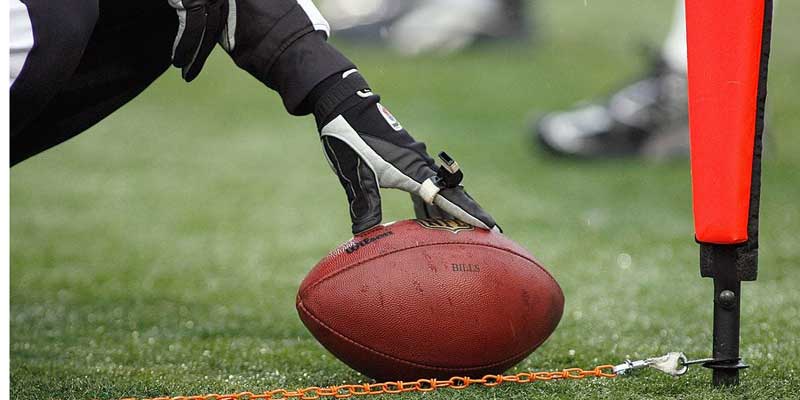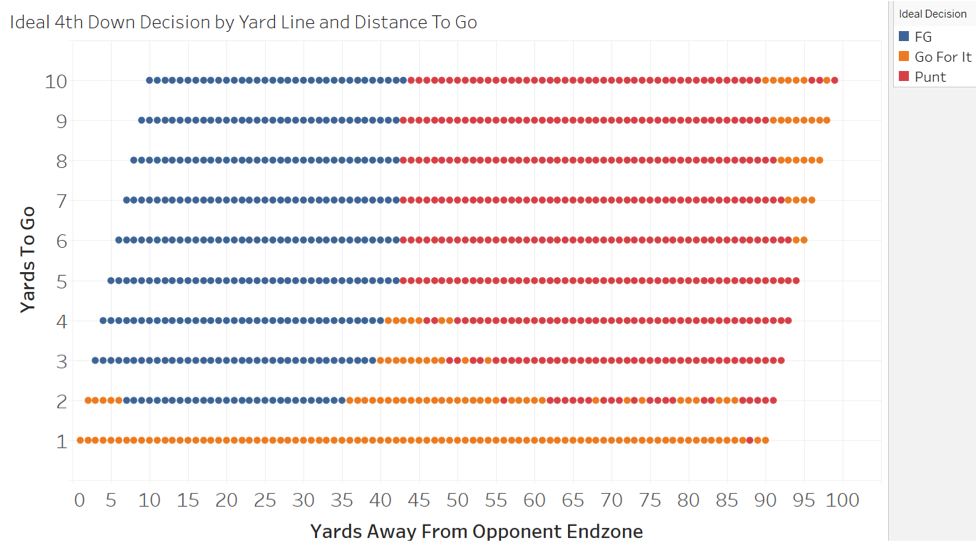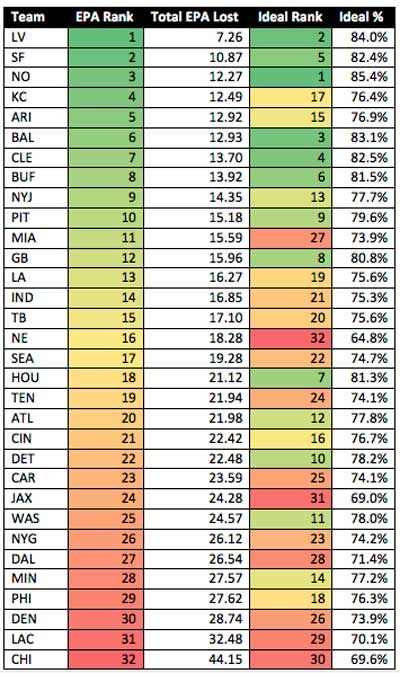Breakdowns
12/14/20
3 min min read
Study: Fourth-Down Decisions


One of the first things the analytics community discovered is that NFL teams should go for it on fourth down much more than they do. This quick study looks at teams through Week 13 of the 2020 season and attempts to determine how teams’ decision-making lines up with optimal decisions from an EPA perspective. (A quick refresher on EPA can be found here.)
Methodology
When a team fails to convert on third down, it has three distinct options: punt, attempt a field goal, or go for it. Each of these decisions has varying levels of EPA associated with them depending on the yardage to gain and field position. To estimate the EPA of a fourth-down conversion attempt, the chances of successfully converting must first be determined.
To find the chances of converting a fourth down, all the third- and fourth-down attempts from the last five seasons were studied to find the percentage of successful tries from each down and distance. Third downs were included in this calculation because of sample size, and because a team’s goal on third down is generally the same as it is on fourth down -- to get the first-down yardage. Because of sample size, yardage beyond 10 yards was grouped into 11-12 yards, 13-15, 16-20, and 21-plus, with yardage to go in each of these groups having the same chance of conversion.
Once the chance of conversion was found, the EPA for success and failure was estimated. For simplicity’s sake, a successful conversion was considered to gain exactly the needed yardage, while a failed attempt was considered to gain zero yards. Then, the EPA for a successful conversion was multiplied by the chance of conversion and added to the EPA for a failed conversion multiplied by the chance of failure. Thus, the total EPA for a conversion try was found.
For punting, the EPA was found by averaging the EPA per punt from each yard line over the past five seasons and smoothed by a trendline to avoid outliers. For field goals, the average FG% from that yard line over the past five seasons was found, also smoothed with a trendline. The percent chance of making the field goal was then multiplied by 3 minus the expected points prior to the play to find the EPA for a make and added to 1 minus the expected FG% times the EPA for a failure to find the total EPA for a field goal attempt.
The three EPA measurements were then compared for each yard line and yardage to go.
The choice with the highest EPA for each yardage can be seen in the graph below.

As can be seen, the ideal choice on fourth-and-1 is to go for it -- regardless of field position, as the chances of converting with one yard to go is quite high (almost 68%). On fourth-and-2, the chance of conversion is about 57% and the choice is more dependent on field position, as it is with 3 or 4 yards to go. One surprising result is that the model suggests the ideal choice is to go for it when backed up against your own end zone. This result is probably based on the possibility of a blocked punt or one that does not travel far enough to justify not going for it.
Ranking 2020 teams
The chart below shows how NFL teams rank in terms of EPA lost by making less than ideal choices on fourth down and by how often they make the ideal choice as specified by the model.

The difference between the EPA of the highest-ranking team, the Raiders, and the lowest-ranking team, the Bears, is significant. Just off fourth down decision-making, the Bears have lost almost 37 more expected points than the Raiders, over 3 points per game.
The Patriots have the lowest percentage of ideal fourth-down decisions this season at just under 65%, but rank 16th in EPA lost, due to having the second-fewest fourth downs in the league. The Vikings have the fourth-highest percentage of ideal fourth-down choices but rank 28th in total EPA lost because the times they chose incorrectly cost them a large amount of EPA.
Keep in mind that these results reflect the ideal choice for an average team and are agnostic of actual results; rather, they are the theoretical best choices. These results also do not account for end of game situations, where win probability can be more important than EPA. Nonetheless, this is a good high-level look at when teams should make which decisions on fourth down and which teams are benefiting the most from these decisions so far this season.








